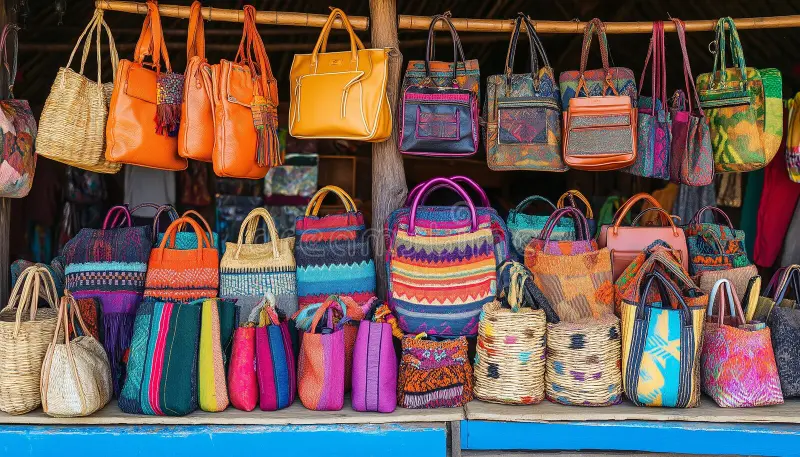Introduction
In industries ranging from agriculture and construction to retail and food packaging, product protection and shelf life are key concerns. Whether you’re storing grains, chemicals, fertilizers, or even consumer goods, the packaging you choose can significantly impact product quality over time. Woven polypropylene bags—widely used across multiple sectors—are a reliable solution designed to do more than just hold materials. They actively contribute to preserving product integrity, extending shelf life, and ensuring safety during storage and transport.
Let’s explore how woven bags provide superior protection and why they’re a preferred choice for bulk packaging.
What Are Woven Bags?

Woven bags are made from woven polypropylene (PP) fabric, which is created by weaving polypropylene threads together in a crisscross pattern. This structure makes the bags incredibly strong, lightweight, and breathable, giving them an edge over many other packaging materials.
They are used to package:
- Grains and seeds
- Sugar, flour, and rice
- Fertilizers and cement
- Animal feed
- Chemicals and pharmaceuticals
- Retail goods (in woven shopping bags)
1. Physical Strength Prevents Tears and Contamination
One of the biggest threats to product shelf life is exposure to air, moisture, pests, and contaminants. Woven bags offer high tensile strength, which helps prevent tearing, bursting, or puncturing during handling and transport. This reduces the risk of the product being exposed to external elements.
For example, in agricultural settings, broken bags of rice or grains can invite mold, insects, or spoilage. Woven bags hold their shape and protect their contents, minimizing loss due to physical damage.
2. Moisture Resistance Enhances Longevity
Polypropylene is inherently hydrophobic, meaning it resists moisture absorption. When woven bags are coated with lamination or lined with inner liners (such as BOPP or LDPE), they provide an added barrier against humidity and water ingress.
This moisture resistance is critical for products like:
- Cement (which hardens with moisture)
- Grains (which can spoil or sprout)
- Chemicals (which degrade when exposed to water)
By keeping moisture out, woven bags help extend the usable life of sensitive goods and prevent degradation.
3. UV Protection for Outdoor Storage
Some woven polypropylene bags are manufactured with UV stabilizers that protect the contents from sunlight degradation during extended outdoor storage.
This is particularly important for:
- Agricultural products stored on farms
- Construction materials at job sites
- Products awaiting transportation in open environments
Without UV protection, both the bag and its contents can break down under prolonged sun exposure. Woven bags designed with UV resistance offer durability and shelf-life extension in such scenarios.
4. Breathability for Freshness
Unlike completely sealed plastic bags, certain woven bags allow for air circulation. This is especially beneficial for storing items like:
- Potatoes
- Onions
- Grains
- Feed
Proper airflow reduces the buildup of moisture, heat, and gases, which can lead to spoilage or microbial growth. Breathable woven bags maintain product freshness over longer periods without sacrificing strength or safety.
5. Barrier Layers for Additional Protection
Many woven bags are laminated or feature additional inner linings to form multi-layer packaging solutions. These layers act as barriers against oxygen, light, moisture, and even odors, depending on the product’s needs.
For example:
- Laminated woven bags help prevent moisture ingress and preserve the aroma of pet food or fertilizers.
- Valve-type woven bags can seal themselves after filling, locking in freshness and blocking contaminants.
- Vacuum-compatible woven bags may also be used in some advanced storage applications where air removal is necessary.
These features make woven bags highly customizable for specific shelf-life requirements.
6. Stackability Reduces Storage-Related Damage
Woven bags are uniform and flexible, making them easy to stack securely on pallets or in storage rooms. Proper stacking reduces the risk of:
- Bag collapse
- Spillage
- Bottom-bag compression
Less physical stress means the contents remain undisturbed and uncompromised, maintaining product quality over time.
7. Pest Resistance Supports Sanitary Storage
Unwanted pests such as rodents or insects can quickly ruin entire batches of packaged goods. Woven bags—especially those with tight weaves and laminated finishes—act as a physical barrier to pests.
Moreover, woven bags are often used in conjunction with pest-proof storage methods, such as:
- Airtight containers
- Metal drums
- Sealed pallets with shrink-wrap
When integrated into a pest-resistant system, woven bags help maintain hygiene and product purity, which is crucial for food-grade and pharmaceutical packaging.
8. Printing and Labeling Aid in Stock Management
While not directly related to shelf life, the ability to print product details, expiration dates, handling instructions, and batch numbers on woven bags plays an important role in inventory control and quality assurance.
Clear labeling ensures that:
- Expired products aren’t mistakenly distributed.
- Bags are rotated correctly (FIFO method).
- Products are traced efficiently in case of recalls or quality checks.
This contributes to better overall product management, indirectly supporting shelf-life extension through accurate handling.
Also Read: How Woven Bags Support Sustainable Packaging Goals
Conclusion
Woven polypropylene bags are much more than industrial packaging—they’re a critical tool in preserving product quality, extending shelf life, and protecting contents from environmental damage. With customizable features such as UV protection, inner linings, moisture resistance, and breathable design, woven bags offer the flexibility and durability needed across diverse industries.
Whether you’re packaging food, chemicals, or construction materials, switching to woven bags can help you reduce waste, lower costs, and maintain product integrity from warehouse to end-user.
